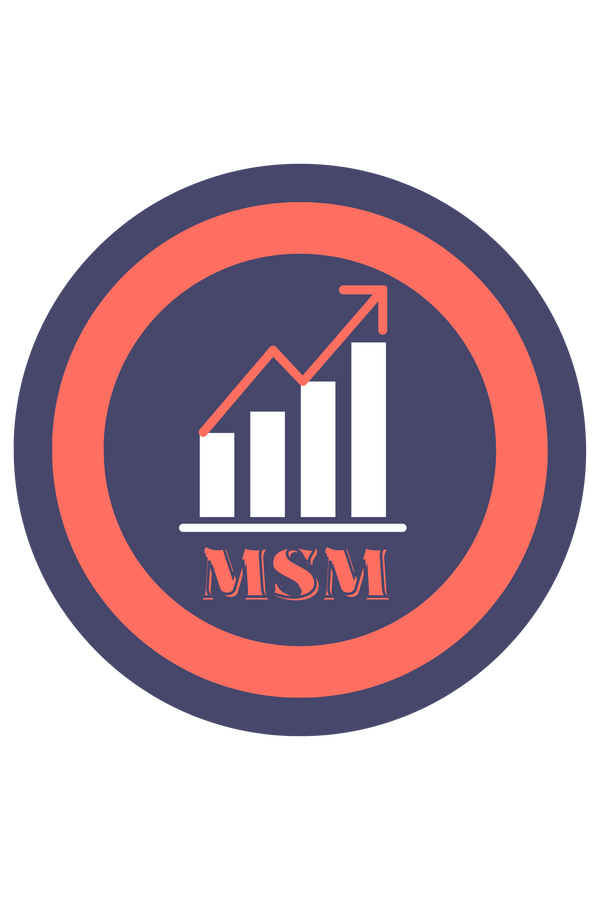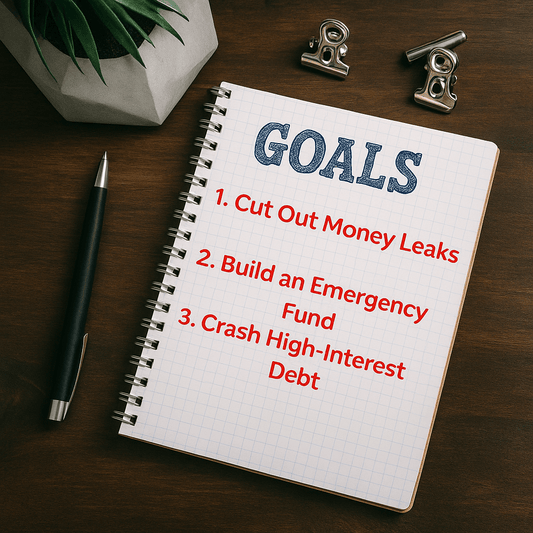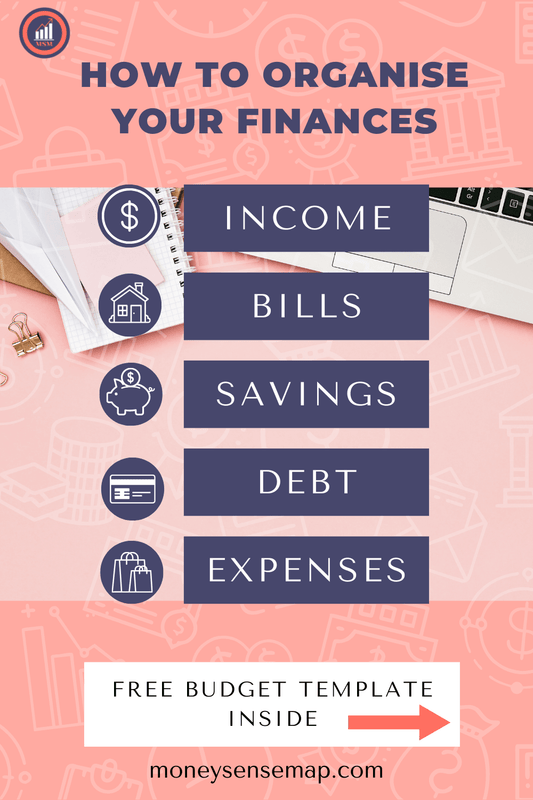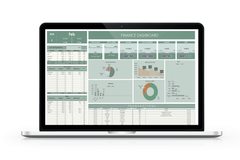5 Practical Steps to Start Budgeting Today
Budgeting might seem like a daunting task, but it’s one of the most effective ways to gain control over your finances and achieve your financial goals. Whether you want to pay off debt, save for something special, or simply ensure you’re living within your means, creating a budget is the first step toward financial freedom.
Does this sound familiar? You’ve tried to get your finances in order before, but it always seems too complicated, or maybe you feel like you’re not making enough to even start saving. You’re not alone—many people struggle to find clarity in their finances. But here's the truth: budgeting doesn’t have to be overwhelming. It's about taking small, simple steps that lead to big results over time.

Step 1: Track Your Income
The foundation of any budget is knowing exactly how much money you have coming in. This includes your salary, freelance income, side hustles, and even irregular earnings like bonuses or gifts. The more accurate you are with tracking income, the more effective your budget will be.
Why It Matters: Understanding your income gives you a solid baseline for planning your expenses. It helps eliminate the confusion and guesswork that can often leave you feeling like you’re "not making enough" or "not in control."
Relatable Example: Maybe you’ve started a side hustle, but you’re not sure how to account for the inconsistent income. It can feel frustrating when your earnings vary from month to month, but by averaging your income over a few months, you’ll get a clearer picture of what you actually make.
Action Tip: Create a list of all your income sources. If your income fluctuates, estimate a monthly average based on your last 6-12 months. Remember, it's okay if things aren't perfect—what matters is getting started.
Try Free Online Budgeting Calculator for a quick assessment:
Step 2: List Your Expenses
Once you’ve tracked your income, the next step is to list all your expenses. This includes fixed expenses like rent, insurance, and utilities, as well as variable expenses like groceries, dining out, and entertainment. Be honest and include everything you spend money on, no matter how small.
Why It Matters: It’s common to feel like you’re constantly spending without knowing exactly where your money is going. Listing your expenses is a way to break free from the cycle of feeling lost or overwhelmed when checking your bank balance.
Relatable Example: Have you ever been surprised by how quickly small purchases add up? Those "just a coffee" moments can make a big difference in your overall financial picture. By listing everything, you gain clarity—and you might even be surprised to find areas where you can save.
Action Tip: Break down your expenses into two categories: essential (rent, utilities, groceries) and non-essential (entertainment, shopping). This helps you prioritise and see where you can adjust if needed.
- Free Automated Budget Calculator: Input your expenses and customise your categories, helping you see exactly where your money is going.
Step 3: Identify Areas for Savings
After you’ve categorised your expenses, look for areas where you can save. Start with non-essential spending—small adjustments, like cutting back on dining out or subscriptions, can add up over time. But don’t feel like you have to cut everything at once. Balance is key to making a budget sustainable.
Why It Matters: The idea of cutting expenses often feels like a sacrifice, but budgeting doesn’t have to mean giving up everything you love. The goal is to be smart with your spending so that you can save without feeling deprived.
Relatable Example: Have you ever felt guilty after splurging on a dinner out or a shopping spree, thinking it was the reason you’re not saving enough? The truth is, you don’t have to eliminate those moments completely—just make room for them by cutting back on things that don’t add much value to your life.
Action Tip: Choose 1-2 areas where you can comfortably cut back. For example, limit takeout to once a week or cancel an unused subscription service. Small changes can lead to big savings.
Tools You Can Use:
-
Free Online Budgeting Calculator: Track your goals in the template and adjust your budget as needed to stay on target
-
Ultimate Finance Tracker. Complete automatic spreadsheet. includes Debt Tracker, Savings tracker, Net worth evaluation, Monthly and Yearly Overview, and more.
Step 4: Set Financial Goals
Budgeting works best when it’s tied to specific financial goals. Whether you’re saving for a vacation, building an emergency fund, or paying off debt, having a clear goal in mind gives you a reason to stick to your budget and helps you track progress.
Why It Matters: Without a goal, budgeting can feel like just another chore. But when you tie it to something meaningful, it becomes a powerful tool for achieving your dreams.
Example: Maybe you’ve been wanting to take a trip, but the idea of saving up seems impossible with your current spending habits. Setting a specific savings goal makes that trip not only possible but something to get excited about as you see your progress.
Action Tip: Write down 1-3 financial goals and determine how much you need to save each month to reach them.
Next Read: Why Setting Financial Goals Is Key to Your Success
Tools You Can Use:
-
Free Online Budgeting Calculator: Track your goals in the template and adjust your budget as needed to stay on target
- Ultimate Finance Tracker. Complete automatic spreadsheet. includes Debt Tracker, Savings tracker, Net worth evaluation, Monthly and Yearly Overview, and more.
Step 5: Use a Budgeting Tool
Having the right tool can simplify the budgeting process and help you stay consistent. There are several apps and templates that cater to different needs, whether you want automation or prefer manual control.
Why It Matters: With so many options available, the key is to find the tool that fits your style—whether you prefer hands-on budgeting or want something that does the heavy lifting for you.
If you’ve ever tried to keep track of your budget on paper or through mental notes, you know how quickly things can get messy. A good budgeting tool will streamline the process and give you a clear picture of where your money is going, without the hassle.
Tools You Can Use:
- One-tab Budgeting and Expenses Tracker in Google Sheets. Set it up once and use as many months/years as needed.
- Free Online Budget Calculator: If you’re looking for an easy to use one-tab finance tracker check out our Complete Monthly Tracker in Excel.
Conclusion: Start Your Budgeting Journey Today
Budgeting doesn’t have to be intimidating or complicated. By following these five practical steps, you can take control of your finances, make informed spending decisions, and start working toward your financial goals.





